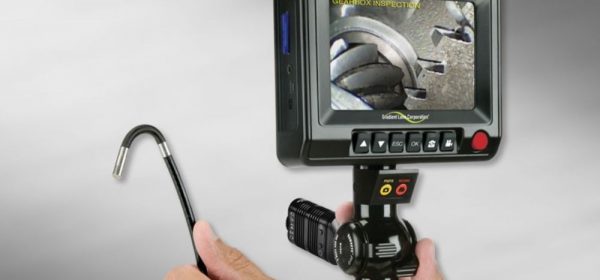The Difference Between a Borescope and an Endoscope

June 3, 2021
Two very useful inventions that are frequently confused are borescopes and endoscopes. All too often, people mix their names up or can’t tell them apart. Although they look similar, the difference between a borescope and an endoscope is significant. Both borescopes and endoscopes have specialized applications and features that make them exclusive tools to the industries that require them.
What Are Borescopes?
One of the greatest inventions to appear during the 60s was the borescope. Unsurprisingly, it appeared because of the need for a custom tool that could inspect inside pipes, elements, and tubes within the tight confines of a lab. Despite its short lineage, borescope equipment has astounding uses and a wide variety of types, models, and specifications as a result.
Borescopes typically come in three varieties. A rigid borescopes is the original design and has a camera mounted at the end of a hollow pipe with a diameter to match its relative applications. Next, the fiber optic variety appeared. This type is the most common variety today due to its ability to look into irregularly shaped space by flexing. Finally, people invented videoscopes. This form of borescope also features a camera at the end of a flexible wire but has a higher resolution compared to the previous types and often has a tip that rotates for better viewing.
Features of Endoscopes
The difference between a borescope and an endoscope starts with the origins of these devices. Archeologists have found the earliest prototypes of endoscopes in the ruins of Pompei. It’s no surprise that even early civilizations had an interest in internal health matters. The best-known and recorded endoscope design occurred in 1805 when the French inventor Antoine Jean Desormeaux coined the term. The device would develop further over the next century, gradually gaining more features.
The biggest difference between an endoscope and a borescope lies in the design intent. At least part of an endoscope interacts with the internal tissues of the body. Because of this purpose, manufacturers must seal every element against moisture and make endoscopes easy to clean. Despite modern devices looking similar, endoscopes are often even more expensive than even the best videoscopes due to the specifications to make them safe and comfortable for use on patients.